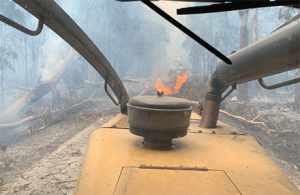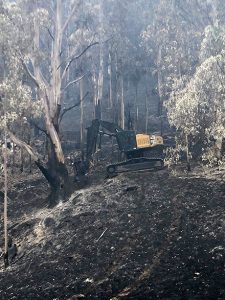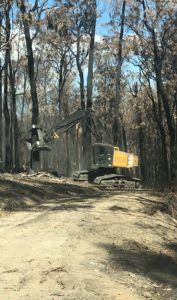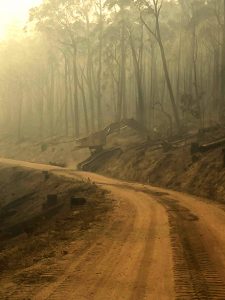South Buchan logging contractor Reece Reynolds has been putting in 11-hour days to help contain the fires which continue to threaten East Gippsland. He is one of many forestry contractors who have put their machines to work around the clock in the effort to clear roads, remove hazardous trees and black out smouldering fires. Source: Timberbiz
“At the peak of the fires we were pulling 15-hour days but it’s quietened down a bit,” he said.
“The machines have been working pretty much non-stop since late November and there’s still a fair bit to do.”
Mr Reynolds’ two harvesters, skidder and dozer are part of a pool of 200 mechanical resources used by the Department of Environment, Land, Water & Planning’s Forest Fire Management division at times of crisis such as this.
It’s a resource that is critical to fire prevention and containment and it’s a resource that will be considerably diminished if the State Government makes good its promise to end forest management via native timber harvesting in Victoria.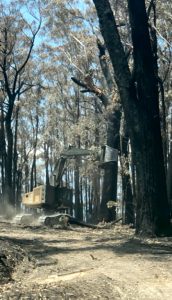
“Any sort of forest management is better than none but locking it up is the path we are going down,” Mr Reynolds said.
“Forestry gives access to the forests as well as the machines which are capable of creating fire breaks and cleaning up afterwards.
“We work in National Parks as well – when there’s fire, all trees are the same, no matter where they are on a map.”
It’s a frustration echoed by many forest workers who, just weeks after being told their industry will be shut down, have been in the bush saving property and lives.
Mr Reynolds’s own property was lucky, the wind changing direction just as it hit his fences, but other contractors have lost nearly everything, and they are bewildered by the lack of recognition of their value in the bush.
“The CFA gets a lot of well-deserved attention for the work they do, but there’s been no acknowledgement by the Government at all for the forestry contractors,” Mr Reynolds said.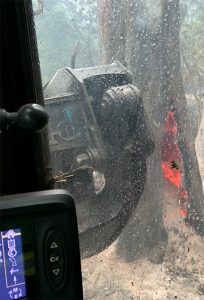
“It makes you wonder how much people care about the forests.
“If you want to save an animal then the idea of locking it up gives wildlife no hope.
“We’ve seen wildlife taking refuge in areas harvested for native timber where the fire has stopped or cooled right off.”
Mr Reynolds said some of the work he’s doing now is reopening roads to landholders which were blocked by fallen trees.
The trees grow in ‘wildlife corridors’ which border properties along rural B-road easements, but Mr Reynolds said they create a hazard in fire conditions.
“Because there is some heavy timber in them, they become fire corridors,” he said.
“The fire quickly travels through them to burn a property and then travels on to the next one.
“There just needs to be a review of how vegetation is managed on all public land at all levels of government.”
Meanwhile, Mr Reynolds is among many who are wondering what the future of the East Gippsland timber industry will look like when the fires have finally been extinguished.
“We’re mostly burned out around here except for a few pockets. A few of the mills have stock but they’ve been hit pretty hard and it’s all pretty uncertain,” he said.
“It depends on what’s left and what’s unburned but hopefully Governments will help us.”